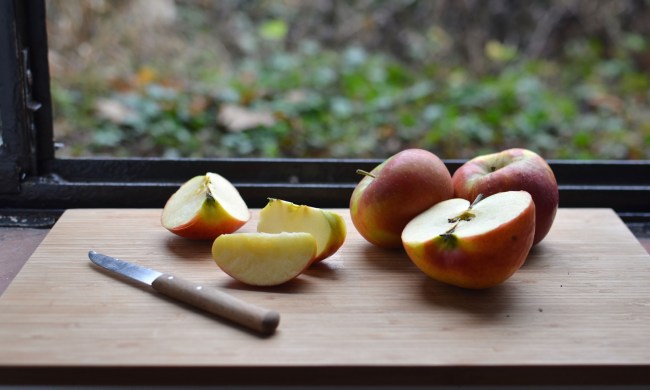Cooking oil is an essential ingredient whenever you’re in the kitchen. Whether you’re cooking veggies or baking a cake, using the right oil is vital. Two of the most common oils are canola and olive oil, but when should you use each one? And is one cooking oil better than the other? Both canola oil and olive oil have their own advantages and drawbacks. To discover which one you should use, read more below.
Canola oil
Canola oil is a multipurpose cooking oil that is relatively inexpensive. There are mixed opinions, however, on whether the oil is healthy or not. Keep reading to learn about canola oil.
Versatile uses
This oil is widely used in cooking, baking, and commercial food production. Its versatility is largely thanks to its mild and neutral flavor. Canola oil also has a high smoke point, which means you can cook it at very high heat without burning or smoking it. You can use canola oil for grilling, stir-frying, sautéing, and more. People also use it as a fat when baking desserts to produce the optimal moisture and texture.
High in healthy fatty acids and phytosterols
Determining whether canola oil is healthy or not is complicated. The oil is exceptionally high in omega-6 fatty acids, which can be great for heart health when consumed in moderation. However, when you have a diet that’s too high in omega-6 fats, it can actually increase systemic inflammation in the body leading to diabetes and other chronic ailments. Canola oil is also high in phytosterols, which absorb cholesterol. However, research has also found that increased consumption of this oil can be harmful to memory. A study looked at the impact of canola oil on mice with symptoms of Alzheimer’s disease. Researchers discovered that the oil had a detrimental effect on their learning ability and memory. So, there are both pros and cons to the impact canola oil has on human health.
Low-cost cooking
Canola oil is one of the most affordable cooking oil options you can find at the grocery store. A one-gallon bottle of this cooking oil from Target costs between $5.59 and $6.99. The low price makes it an excellent option for most amateur cooks who don’t want to spend a fortune on cooking supplies.
https://www.target.com/p/canola-oil-1gal-128oz-good-38-gather-8482/-/A-78376310#lnk=sametab
https://www.target.com/p/crisco-canola-oil-128oz/-/A-47094915#lnk=sametab
Olive oil
While it’s often praised for its health benefits, olive oil is less versatile and more expensive than canola oil. Read on for more information.
Limited uses
While canola oil can be used to bake or cook almost anything, olive oil has much more specific uses. It has a low smoke point and a distinct, moderate flavor. This makes it challenging to use when baking or cooking recipes that require high heat. However, it is perfect for sautéing and roasting foods. Olive oil is also delicious when used as a salad dressing base or a topping for already cooked foods like grilled vegetables, pasta, and chicken.
Heart-healthy, anti-inflammatory, and more
Most experts agree that olive oil is generally a healthy option. It is naturally anti-inflammatory, thanks to the oil’s high levels of antioxidants like oleic acid and oleocanthal. Olive oil is also heart-healthy. It is high in monounsaturated fats and low in polyunsaturated fat. One study even found that regularly consuming olive oil lowered the chance of cardiovascular disease by 48%. Other studies have found links between eating olive oil and improved memory and a lower risk of type 2 diabetes.
Higher costs
Olive oil is also more costly than canola oil. For example, the largest bottle Target sells is about 50 fluid ounces (compared to 128 oz of canola oil). And though this container is smaller, it costs more, selling for $11.89. https://www.target.com/p/pure-olive-oil-50-8oz-good-38-gather-8482/-/A-77603776#lnk=sametab If you are making a recipe that calls for olive oil, this can be a worthwhile purchase. However, this cost can be prohibitive for general cooking use, especially for home chefs.
Because of their distinct uses, it’s helpful to have both canola oil and olive oil in your cabinet. For your health, you should use olive oil whenever possible. However, using a few tablespoons of canola oil when you’re cooking or baking is no cause for concern; it can still be good for your heart health when consumed in moderation. And while olive oil is more expensive, the health benefits it offers are well worth the extra cost. All in all, the best cooking oil depends on what you’re making, but olive oil is an overall healthier choice.
BlissMark provides information regarding health, wellness, and beauty. The information within this article is not intended to be medical advice. Before starting any diet or exercise routine, consult your physician. If you don’t have a primary care physician, the United States Health & Human Services department has a free online tool that can help you locate a clinic in your area. We are not medical professionals, have not verified or vetted any programs, and in no way intend our content to be anything more than informative and inspiring.



